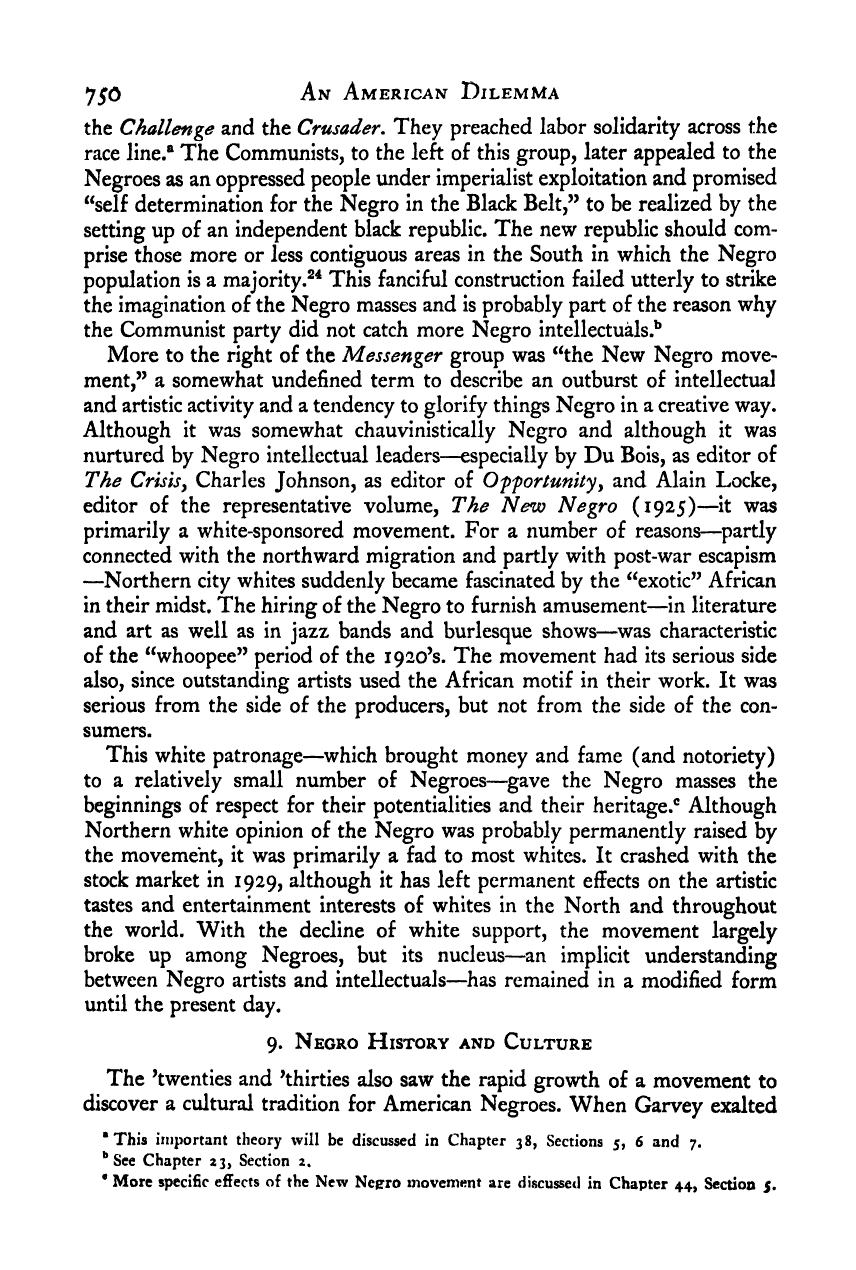Note: Gunnar Myrdal died in 1987, less than 70 years ago. Therefore, this work is protected by copyright, restricting your legal rights to reproduce it. However, you are welcome to view it on screen, as you do now. Read more about copyright.
Full resolution (TIFF) - On this page / på denna sida - IX. Leadership and Concerted Action - 35. The Negro Protest - 8. Post-War Radicalism among Negro Intellectuals - 9. Negro History and Culture

<< prev. page << föreg. sida << >> nästa sida >> next page >>
Below is the raw OCR text
from the above scanned image.
Do you see an error? Proofread the page now!
Här nedan syns maskintolkade texten från faksimilbilden ovan.
Ser du något fel? Korrekturläs sidan nu!
This page has never been proofread. / Denna sida har aldrig korrekturlästs.
750 An American Dilemma
the Challenge and the Crusader, They preached labor solidarity across the
race line.® The Communists, to the left of this group, later appealed to the
Negroes as an oppressed people under imperialist exploitation and promised
^‘self determination for the Negro in the Black Belt,” to be realized by the
setting up of an independent black republic. The new republic should com-
prise those more or less contiguous areas in the South in which the Negro
population is a majority.^^ This fanciful construction failed utterly to strike
the imagination of the Negro masses and is probably part of the reason why
the Communist party did not catch more Negro intellectuals.^*
More to the right of the Messenger group was ‘‘the New Negro move-
ment,” a somewhat undefined term to describe an outburst of intellectual
and artistic activity and a tendency to glorify things Negro in a creative way.
Although it was somewhat chauvinistically Negro and although it was
nurtured by Negro intellectual leaders—especially by Du Bois, as editor of
The Crisis
y
Charles Johnson, as editor of Offortunity^ and Alain Locke,
editor of the representative volume, The New Negro (1925)—it was
primarily a white-sponsored movement. For a number of reasons—partly
connected with the northward migration and partly with post-war escapism
—Northern city whites suddenly became fascinated by the “exotic” African
in their midst. The hiring of the Negro to furnish amusement—in literature
and art as well as in jazz bands and burlesque shows—was characteristic
of the “whoopee” period of the 1920’s. The movement had its serious side
also, since outstanding artists used the African motif in their work. It was
serious from the side of the producers, but not from the side of the con-
sumers.
This white patronage—which brought money and fame (and notoriety)
to a relatively small number of Negroes—^gave the Negro masses the
beginnings of respect for their potentialities and their heritage.® Although
Northern white opinion of the Negro was probably permanently raised by
the movement, it was primarily a fad to most whites. It crashed with the
stock market in 1929, although it has left permanent effects on the artistic
tastes and entertainment interests of whites in the North and throughout
the world. With the decline of white support, the movement largely
broke up among Negroes, but its nucleus—an implicit understanding
between Negro artists and intellectuals—has remained in a modified form
until the present day.
9. Negro History and Culture
The ’twenties and ’thirties also saw the rapid growth of a movement to
discover a cultural tradition for American Negroes. When Garvey exalted
‘This important theory will be discussed in Chapter 38, Sections 5, 6 and 7.
**
See Chapter 23, Section 2.
® More specific effects of the New Negro movement are discussed in Chapter 44, Section 5.
<< prev. page << föreg. sida << >> nästa sida >> next page >>